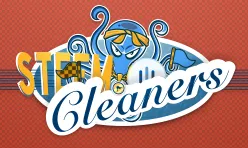
Logo by @cass
Sock Puppet:
online identity used for purposes of deception. Source
Catfish:
A catfish is someone who creates a false online identity. source
This has lead to some curators being a bit overzealous in requesting that a user identify themselves or provide “proof of life” through various verification methods.
This has also led to a debate among the @steemcleaners about the term Identity verification. After all, a person's identity does not need to be disclosed (real or fictitious) in order to prove the authenticity of creative works or content. We’ve reworked our comments to reflect this.
Anonymity and Why It Should Be Protected
There are numerous reasons a contributor may want to maintain their anonymity. A contributor may even have an alternate account in which they publicly verify their identity.
Reasons include:
- Freedom of speech
- Taboo subject matter
- Work related issues including possible conflicts of interest, non-disclosure agreements, etc.
- Retaliation from a government or other entity
- Already having an online stalker on other sites or on steemit.com
- Safety from future online stalkers pursuing offline or to other sites
- Presenting information so that it can be evaluated and critiqued without bias as to origin
- Desire to interact while maintaining some degree of personal privacy (especially on a public immutable blockchain)
- HNWI (High Net Worth Individuals) who wish to remain anonymous owing to the nature of their investment in Steemit.
- Anonymous users may prefer to have their work voted on the merit of its quality than who they are or represent.
When to Ask for It
A common question is when to ask someone to “verify”. The simple answer is when you have found a reason to ask. From a previous steemcleaners report we outlined some of the following reasons and added some clarification:
- Contributor claims to be someone known, i.e. Barry Cooper or Jeff Berwick
- Contributor claims to write for www.mywebsite.com
- Contributor claims to be the creator of works found elsewhere on the internet
- Curator found reasonable evidence to believe a contributor purchased a photo (e.g via fiverr.com) posted for verification.
- Curator found a photo taken from the internet and posted for verification.
When NOT to Ask for It

Anonymity should be respected unless there is a reason to question the authenticity or ownership of works in a contributors posts.
- When no “online persona” is found of the contributor
- When a contributor’s post contains original content that is not found anywhere else on the internet or in print.
- Because you feel the anonymous author’s post is undeserving of its high payout.
- Because the contributor's post seems fishy
How to Ask for It
Always be polite! Do not jump to conclusions. There have been many reports of identity thefts and plagiarism, when in fact, the contributor was the same person and their content was their original work.
The current comment template for @steemcleaners is:
Hello! Welcome to Steemit.
In order to prevent identity theft, identity deception of all types, and content theft we like to encourage users that have an online identity, post for a website or blog, are creators of art and celebrities of all notoriety to verify themselves. Verified users tend to receive a better reception from the community.
Any reasonable verification method is accepted. Examples include:
- A post or tweet on an established facebook, twitter, Instagram or other social media account with a link to your contribution on Steemit.
- A reference to their Steemit account on their website or blog.
Thank you!
Steemcleaners Action to Abusive Requests
Comments may receive a reply or a flag from @steemcleaners for:
- Asking for verification when there is no reasonable “reason” or “proof” provided and a consensus among the group that it isn’t warranted could result in a reply to the comment
- Repeatedly asking for verification when it isn’t warranted could result in a flag on the comment
- Rudely asking or badgering a contributor could result in the comment being flagged
- Witch hunting will result in the post/comment being flagged.
Types of Verification
Any reasonable method should be accepted by the community.
- A post or tweet to an established facebook, twitter, or other social media account
- A reference to their steemit account on their website or blog
For Those Wishing to Remain Anonymous
Ensure that the content you post cannot be found on other sites. Do a google search of images and text before posting.
A steemit member who wished to remain anonymous forgot they had posted some images on a site a year or so ago. Had the member not been informed and deleted their forgotten image account, this could have led to questions and a request for verification.
Don’t make claims you do not want to back up. If you claim to have been the inventor of xyz, the co-founder of xyz, that you are xyz from that xyz site, or that you are an influential employee of xyz this may lead to your identity being questioned.
Don’t mention your names (real or fictitious), age, date of birth, names of your family members, or other identifiable information. Either maintain complete anonymity with respect to your identity or maintain a reasonable public profile with a basic verification in place for your ID or your content.
Ask @steemcleaners - Future Q&A Posts
@steemcleaners will be doing a semi-regular post titled “Ask @steemcleaners” in the future. If you have a question that you feel we haven’t addressed on Identity & Content Verification please post it in the comments. Questions asked may be included in a future “Ask @steemcleaners” posts.
